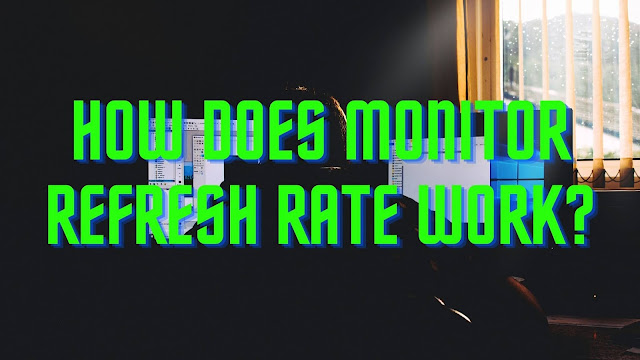
We often hear the term refresh rate when we talk about computers and monitor work. Computer buyers and avid gamers are also very particular about it. What is the refresh rate in monitors and why is it important to consider before buying a computer? We answered the common questions people frequently asked about monitor refresh rates.
What is a monitor refresh rate?
The monitor refresh rate refers to the number of times image updates per second as displayed. This refresh speed of the display is measured by Hz or Hertz as the unit of frequency. The refresh rate updates are counted as 1Hz to one cycle per second. So, if your monitor says its refresh rate is at 60Hz, it means it completes 60 cycles per second. Simply put, your monitor is refreshing the image 60 times per second.
Refresh Rate Vs Frame Rate
Do not get confused about refresh rate and frame rate when it comes to display. While refresh rate is the number of times an image updates a display, frame rate refers to the display information being sent. Frame rate is the number of movements of still images or frames being displayed. While frame rate sends still images to produce motions, refresh rate caps or limits the information being sent for display. These attributes need to be synchronized for users to enjoy the visual experience.
For instance, if your frame rate runs at 120 frames per second, and your refresh rate is at 60Hz, it means your refresh rate is lower and cannot keep up with the information. When frame rate is higher than the refresh rates, this is when users experience lags, glitches, tearing, or slices in their displays. However, If you flip it and say you are running 120 frames per second with a refresh rate at 144Hz, you will experience a smooth display transition.
Does a higher refresh rate mean better viewing?
Serious gamers and digital artists recommend higher refresh rates for smoother and better content viewing. Basic displays usually have 60Hz refresh rate and run at 60 frames per second. Mid-range and high scale gadgets like iPads, VR Headsets are between 90Hz to 144Hz. Monitors above 144Hz are considered high refresh rates and the kind typically used by gamers. However, there are other factors to be considered to fully utilize this spec. As mentioned, frame rates and refresh rates must be aligned.
A high refresh rate must be paired with a high frame rate to be fully utilized. Your monitor is only capable of displaying images smoothly according to its capacity. The monitor, CPU, and GPU have to be compatible with their processing speeds to get the smooth display you want. If you are running at a 144Hz refresh rate, your frame rate must be at 120 fps or equal. Ideally, it’s a 1:1 ratio. When your monitor refresh rate and GPU frame rate are aligned, you will notice a sharper visual display of images, colors, and details with smoother mouse movement.
Does monitor resolution affect the monitor refresh rate?
When it comes to image display, the higher the pixel, the better the picture. However, if you are considering motion resolution, higher resolution can slow down your refresh rates. Most 4K UHD resolutions are supported by 60Hz. Otherwise, you will need a monster graphics card to transition faster than 60 frames per second.
What is the ideal monitor refresh rate?
Most monitors are available in different refresh rates from 60Hz up to high-end 360Hz. However, you don’t necessarily have to choose high refresh rates monitors, especially if you are a non-gamer. Motion resolution is more significant to gamers.
A serious gamer knows that lower resolution and a good graphics card mean better and faster refresh rates. This combination prevents input lag and other motion display issues. Many gamers opt for 120Hz refresh rates and no higher than QHD (2560 x 1440) resolution. If your use of the computer is limited to office work, playback and photo editing, 60Hz - 75Hz refresh rates are ideal especially if you prefer higher image resolution.
Adaptive Sync in Monitors
PC users can enjoy both high resolutions without putting a strain on the GPU. Adaptive Sync is a technology embedded in many latest monitor models to allow PC users, especially gamers to synchronize their refresh rates and frame rates to reduce or eliminate display issues. Since refresh rates are fixed and limited, basically, adaptive sync adjusts your frame rates to match your refresh rates. Modern monitors are now equipped with G Sync and Freesync which easily support as low as 30Hz refresh rates. These technologies can be easily enabled during gaming to improve the quality of your motion displays and monitor performance.
Regardless of your monitor refresh rate, your system configuration and compatibility are what matter. Your CPU, GPU, and monitor should be working together and are compatible to fully take advantage of a seamless image display and content viewing experience.
Comments
Post a Comment